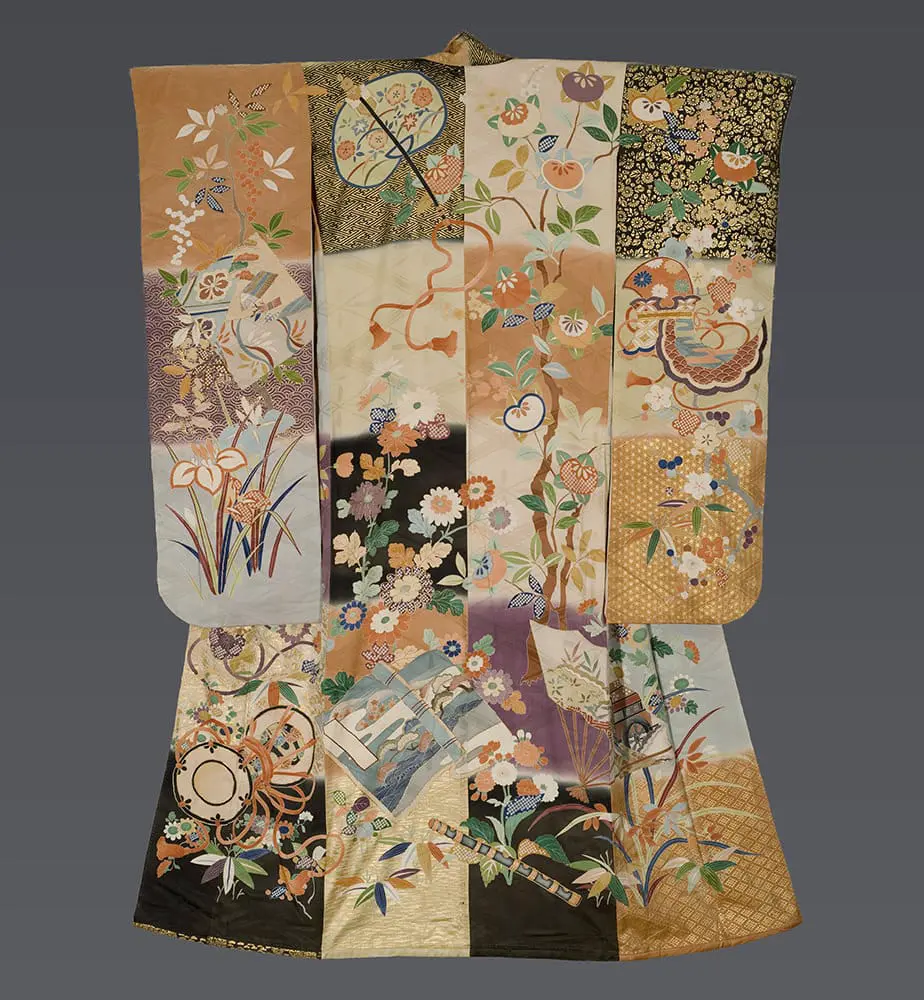Heading
This extraordinary rinzu silk furisode represents a pinnacle of Japanese textile artistry. The large-scale quadrated background creates a dramatic checkerboard effect that immediately evokes the theatrical traditions of Edo period Noh costumes, where such geometric divisions served both aesthetic and symbolic functions. This architectural approach to surface design reflects the influence of contemporary movements toward geometric abstraction, while maintaining deep roots in classical Japanese stage costume traditions.
The yuzen-painting technique is employed with exceptional virtuosity across this complex surface, with each quadrant receiving distinct motifs that range from naturalistic botanical elements to stylized seasonal symbols. The detail images reveal the masterful execution of traditional Japanese decorative vocabulary: bamboo segments rendered with precise linear detail, autumn leaves in graduated color washes, and flowering branches that demonstrate the yuzen painter's ability to achieve both bold graphic impact and delicate naturalistic effects. The metallic couching and gold foil applications create luminous accents that would have shimmered dramatically under stage lighting, while the satin-stitch embroidery adds textural richness and dimensional quality to key motifs.
The kimono's extraordinary 68-inch length and the theatrical quality of its design strongly suggest its creation for dance or dramatic performance, where the trailing hem would create spectacular visual effects during movement. The symbolic content weaves together seasonal references and auspicious motifs—the bamboo representing resilience and noble character, the autumn maple leaves suggesting the poetic beauty of seasonal transition, and various floral elements invoking themes of renewal and prosperity.
Featuring a double inner lining, it's presumably designed for winter wear, and despite a few tiny tears on the shoulder, it measures 49 inches (124 cm) from sleeve-end to sleeve-end and stands tall at 68 inches (173 cm) in height.
This artwork is featured on pages 348-349 of Ceremonial Textiles of Japan, 18th to 20th Centuries. This book, published by Yorke Antique Textiles, can be previewed or purchased on our website here.
.avif)













